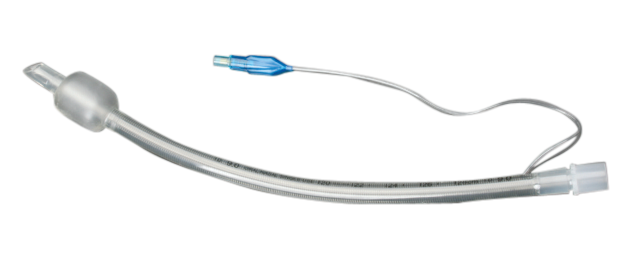
Reinforced Endotracheal Tube, Cuffed
High volume low pressure cuff
If you are in the medical field, then you know that one of the most important pieces of equipment in any medical facility is the endotracheal tube. This type of tube is inserted into a patient's trachea in order to help them breathe.
While there are many different types of endotracheal tubes, the reinforced endotracheal tube is one of the most popular choices. This type of tube is reinforced with an inner layer of soft silicone that helps to protect the patient's trachea from damage. The cuffed version of this tube has an inflatable cuff that helps to seal off the trachea so that air does not leak around the tube.
| Ref. No.: | Size: | Qty. Cs: |
|---|---|---|
| NMR104130 | 3.0 | 100 |
| NMR104135 | 3.5 | 100 |
| NMR104140 | 4.0 | 100 |
| NMR104145 | 4.5 | 100 |
| NMR104101 | 5.0 | 100 |
| NMR104102 | 5.5 | 100 |
| NMR104103 | 6.0 | 100 |
| NMR104104 | 6.5 | 100 |
| NMR104105 | 7.0 | 100 |
| NMR104106 | 7.5 | 100 |
| NMR104107 | 8.0 | 100 |
| NMR104108 | 8.5 | 100 |
| NMR104109 | 9.0 | 100 |
| NMR104114 | 9.5 | 100 |
If you are in the medical field, then you know that one of the most important pieces of equipment in any medical facility is the endotracheal tube. This type of tube is inserted into a patient's trachea in order to help them breathe.
While there are many different types of endotracheal tubes, the reinforced endotracheal tube is one of the most popular choices. This type of tube is reinforced with an inner layer of soft silicone that helps to protect the patient's trachea from damage. The cuffed version of this tube has an inflatable cuff that helps to seal off the trachea so that air does not leak around the tube.
A reinforced endotracheal tube is a type of breathing tube that is inserted through the mouth or nose into the trachea (windpipe). It is held in place by a cuff that is inflated with air. The tube has a small balloon at the end that is also inflated with air. This helps to keep the tube in place and prevents it from being pushed out of the trachea. The balloon can also be used to help inflate the lungs if they collapse.
An endotracheal tube is a medical device that is inserted into the trachea (windpipe) to maintain an airway during general anesthesia or mechanical ventilation. A cuffed endotracheal tube has a balloon-like cuff that is inflated to seal the trachea and prevent leakage of air around the tube.
There are many benefits to reinforced endotracheal tubes. They are stronger and more durable than regular endotracheal tubes, which means they can withstand more force and pressure. This makes them ideal for use in high-risk situations, such as during surgery or in the ICU. Additionally, they are less likely to kink or collapse, which can improve patient care and safety.
An endotracheal tube is a medical device that is inserted into the trachea (windpipe) through the mouth or nose. It is then connected to a mechanical ventilator, which helps the patient breathe.
The risks of having an endotracheal tube are:
- Infection: The tube can become a breeding ground for bacteria, which can lead to infection.
- Damage to the vocal cords: The tube can damage the vocal cords, resulting in a hoarse voice or difficulty speaking.
- Bleeding: There is a risk of bleeding, either from the nose or mouth where the tube was inserted, or from the lungs if the tube damages them.
- Breathing difficulties: If the tube is not placed correctly, it can cause difficulty breathing.
When it comes to choosing the right size for a reinfored endotracheal tube, there are a few things you need to take into account. First, you need to know the internal diameter of the trachea. Second, you need to know the length of the trachea. Third, you need to know the cuff size. Fourth, you need to know the patient's weight.
Once you have all of this information, you can then consult a sizing chart to choose the right size tube for your patient.
The first step is to lubricate the tube. This will help it to slide in more easily. Next, place the tube at the opening of the mouth and gently insert it into the mouth. Once the tube is in the mouth, tilt the head back and align the end of the tube with the opening of the trachea. Slowly insert the tube into the trachea. If you feel resistance, do not force the tube. Instead, try repositioning it and then inserting it again. Once the tube is in place, secure it with tape or a strap.